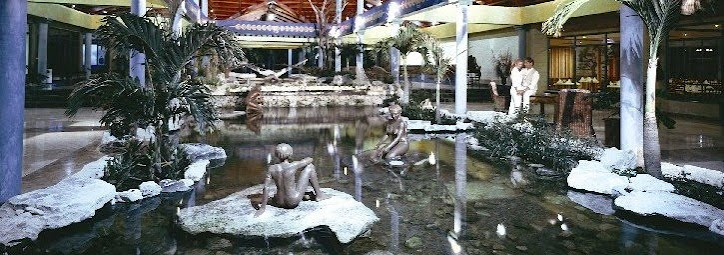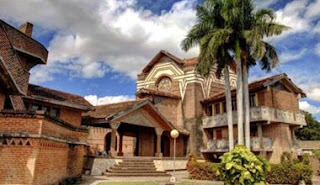Tuesday, July 7, 2015
Velasco's modern architectural building, needing restoration
In Velasco, on a triangular piece of land, rises a modern architectural building, in Frank Lloyd Wright style, threatened by the course of time, rain and human insensitivity.
In 1961, the prominent cultural promoter Felix Varona, who promoted the socio-cultural development of Velasco, in the municipality of Gibara, started the pro-Cultural Centre campaign with the aim of creating a place for the cultural development of the region.
With this purpose he began collecting funds and materials through popular dances, evening events, collecting money in the streets, 20 cents taxes to drivers by crossing the main avenue, and the voluntary contribution “Donate your own brick”.
In time, he collected a fund of 10,000 pesos and got the ground with the local government. The place chosen by Varona was a former property of Gibara’s Beola Company, which had the geometry of a scalene triangle, said Jorge Martinez, local historian.
Varona commissioned the design of an architectural project that responded to his aspirations, but none presented convinced him. Then, he contacted the Cuban-American architect Walter Betancourt, who donated his project and directed the work, financing his own spending. Although the project was considered too ambitious for a small town, calling it a "crazy idea of Felix and the American", the construction of the cultural centre was approved.
Along with Varona and Betancourt joined the master mason Nicasio Santana, who became the right hand man of the architect. They submitted the project to the provincial government of Santiago de Cuba, which approved it and took on its investment in 1964.
Construction began on May 4 of that year and although there were many contradictions, it evolved until 1978, when its construction was paralyzed by the death of its architect Betancourt. Hiss successor was the Havana architect Gilberto Sequí Diviñó, a friend very attuned to his architectural conceptions.
After 27 years of construction, the institution was inaugurated on March 2, 1991, by the then Minister of Culture Armando Hart Dávalos. The building broke with the traditional rules of conduct for relevant works only in big cities.
The Culture Centre is one of the most important monuments of Cuban architecture; this building has an architectural style sui generis of forms and volumes.
Betancourt called the house "Song of Cuba" and considered it a modern work, with elements of organic architecture of Frank Lloyd Wright, who sees the beauty of the materials in their original state, without excessive glare and painting. The work also projects from a universal and Cuban eclectic trend, by melting and combining elements and styles: Asian eaves, the great stained glass of the European Gothic cathedrals, pre-Columbian elements such as the Inca terraces, masks and pyramidal walls, as well as towers and colonial military construction loopholes. Too bad that all that beauty has been damaged by moss, termites and rain!
The Velasco cultural center has been described by several Cuban figures, such as the renowned Cuban TV presenter Germán Pinelli, who considered the work an “Iron and stone monument that is pure poetry,” while famous Cuban actor Salvador Wood (father) described it as “an unprecedented cultural event in our America”.
The Culture Center, National Heritage and first cultural institution built in Cuba after the triumph of the Revolution and bearing the name of a living person, according to local historian Jorge Martinez, was inaugurated 27 years after the beginning of its construction. It was not strange that, in the mid-90s, the theatre and the ballet hall began to present leaks. It was necessary to repair it and its first director, Rafael Rodriguez, using a foreign donation to make a small repair in 1998.
After that year it started declining, the wooden floor began to rot, the crystals lost their colour, the theatre that received so many theatrical and dance companies, became deteriorated.
Rafael wrote to Cuban historian Eusebio Leal, who expressed a willingness to help, but unfavourable circumstances prevented the trip. The years passed and hurricanes as well, and the dream of Felix and Walter’s masterpiece was killed.
The legendary poetry reciter Luis Carbonell said during his visit to the cultural institution in 2005, “the house was built stone by stone, brick by brick, with sweat and effort of the people”. Finally, according to Mari Edil Rondon, current director of the centre, renovation works were included in 2015 investment plan, with an initial budget of 178,000 pesos. After many pleas, critics and comments, mercy has touched the set of this theatre. / With information from www.ahora.cu/en
Subscribe to:
Posts (Atom)


